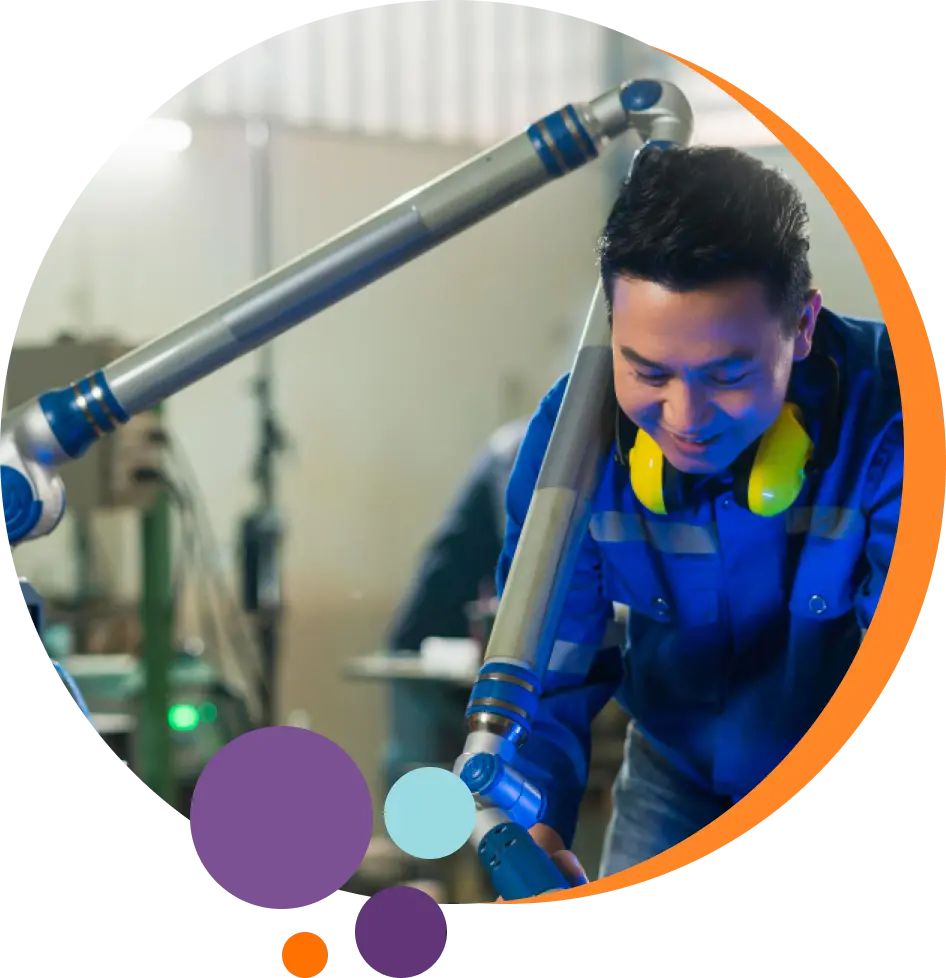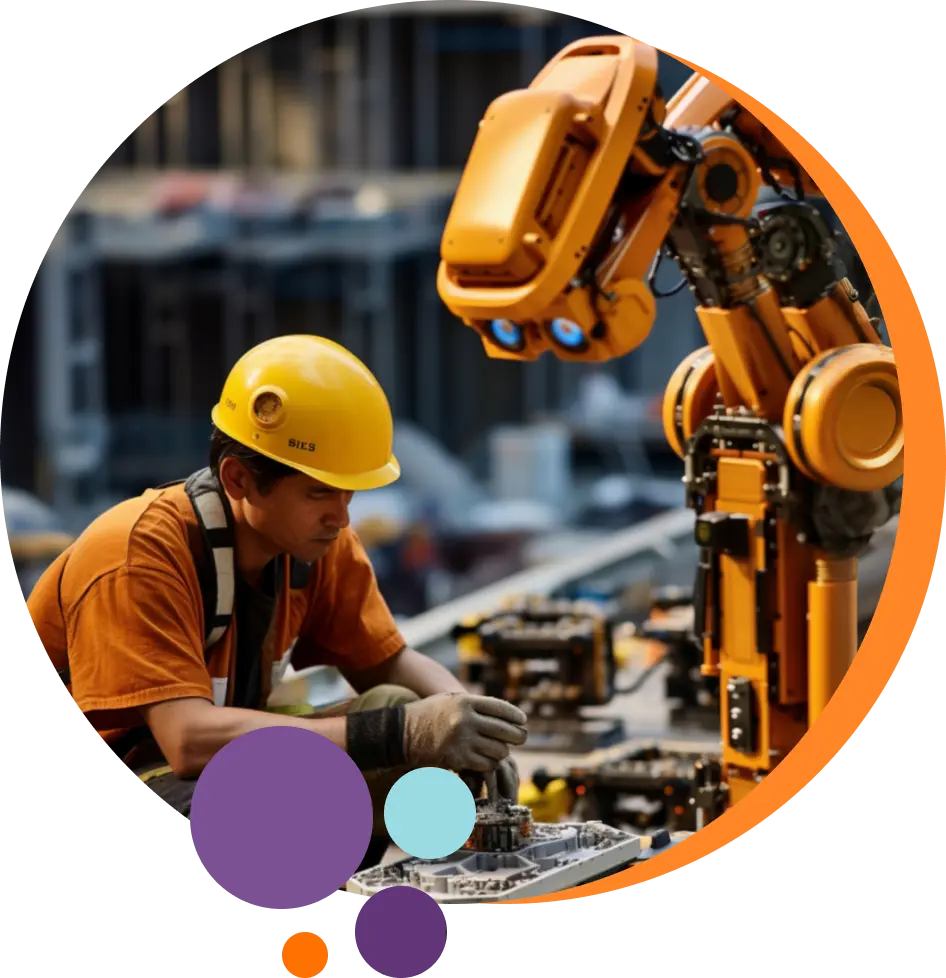13 High-Paying Jobs That Allow You To Work With Robots
The world of robotics offers exciting career opportunities, blending creativity with cutting-edge technology. As we continue to automate more tasks across industries, jobs that involve robots are on the rise.
Whether you’re a robotics engineer developing complex systems, a software engineer creating code for AI-powered robots, or a data scientist manipulating large sets of information, there’s a path in robotics waiting for you.
Let’s dive into some of the highest-paying jobs in this innovative field and see how these roles are shaping the future of work.
1- Robotics Engineer: The Architects of Automated Systems
Robotics engineers work on designing, building, and maintaining robots that can perform tasks usually reserved for humans.
These engineers combine knowledge from mechanical engineering, electrical engineering, and computer science to create machines that can carry out complex tasks in industries like healthcare, manufacturing, and even space exploration.
Whether they’re developing systems for self-driving cars or robots that assist in surgery, robotics engineers are at the forefront of technological advances.
With an average salary of over $100,000 a year, this career path offers both financial rewards and the chance to solve some of the world’s most challenging problems.
According to the Occupational Outlook Handbook, employment for robotics engineers is projected to grow much faster than average, particularly in manufacturing, healthcare, and logistics. The United States Bureau of Labor Statistics expects employment to grow 2% by 2031 for robotics mechanical engineering.

2- Software Engineer: Writing the Brains Behind the Machines
If you have a knack for programming languages and problem-solving skills, a career as a software engineer in robotics might be for you. Software engineers develop the algorithms and code that allow robots to function, think, and learn.
From creating artificial intelligence-based robots to programming the control systems that make robotic arms move with precision, this role is crucial to the success of robotics technology.
With an average salary of around $110,000, software engineers are highly valued for their expertise in turning ideas into fully functioning robotic systems.
And the Occupational Outlook Handbook projects a significant increase in employment for software developers, largely fueled by the growing integration of advanced technology like machine learning and robotics into various sectors.
"Robotic Software Engineers are... in high demand due to the growing adoption of robotics in various industries, including manufacturing, healthcare, agriculture, and logistics. As industries continue to seek automation and efficiency improvements, the need for skilled professionals who can program and optimize robots to perform complex tasks efficiently and safely is on the rise."
Ready to start building a career in robotics or advanced technology? Explore Unmudl’s flexible courses designed to give you the skills employers need today. Find the right course for you and get started!
3- Mechanical Engineer: Bringing Robotic Designs to Life
Mechanical engineers in robotics focus on the physical structure and movement of robots. They design everything from robotic joints to motors, ensuring that robots can perform tasks efficiently and safely.
Whether it’s building robots for industrial automation or creating robotic devices for medical use, mechanical engineers are essential in transforming theoretical designs into tangible machines.
With salaries averaging $90,000 per year, these engineers play a vital role in advancing robotics applications across multiple industries.
The Occupational Outlook Handbook notes that mechanical engineers working on robotic systems are in particularly high demand in sectors like manufacturing, aerospace, and automotive industries.

4- Data Scientist: Harnessing the Power of Data to Improve Robotics
Data scientists working in robotics help machines learn from the data they collect. Whether it’s enabling a robot to navigate its environment through computer vision or helping it process natural language to interact with humans, data scientists are the bridge between information and automation.
These professionals use data manipulation, deep learning, and neural networks to improve the efficiency and capabilities of robots. With an average salary exceeding $120,000, this role offers both financial rewards and the excitement of working with cutting-edge technology.
According to the Occupational Outlook Handbook, jobs in data science are projected to grow much faster than average due to the increased reliance on data to power AI and robotic systems.

5- Machine Learning Engineer: Teaching Robots to Think and Adapt
Machine learning engineers develop the artificial intelligence that allows robots to improve their performance over time.
By designing algorithms that let robots learn from their experiences, these engineers enable robots to take on new tasks with minimal human intervention. This role requires a deep understanding of both data science and programming languages, making it one of the most technical jobs in robotics.
Machine learning engineers are among the highest-paid professionals in the field, with salaries reaching up to $150,000 or more, depending on experience and specialization.
The Occupational Outlook Handbook predicts that machine learning jobs will see a rapid growth trajectory in the coming decade as industries increasingly rely on AI-driven robots to automate tasks and make real-time decisions.
Companies are looking for engineers who can design algorithms that enable robots to learn from their environment and improve performance autonomously.

Take control of your career path with Unmudl’s industry-focused training. Whether you're looking for in-person labs or on-demand courses, Unmudl offers the tools to help you thrive in today’s job market. Start learning today!



























